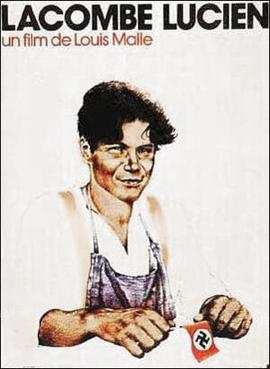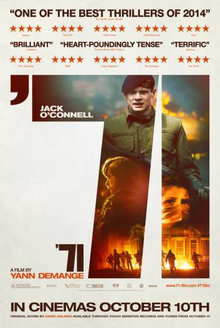“The Bridge at Remagen” purports to tell the tale of
a seminal moment in WWII Europe. In
March, 1945, an American unit won a race to capture an intact bridge across the
Rhine River before the Nazis could destroy it.
The bridge at Remagen turned out to be the only bridge that was captured
so it was unique. The bravery of the men
who risked being blown up with the bridge was worthy of a movie. John Guillermin (“The Blue Max”) directed a
story based on the book The Bridge at Remagen: The Amazing Story of March 7,
1945 by Ken Hechler. The movie was
filmed in Czechoslokia at a bridge similar to the real bridge (but they spent
$250,000 blasting out a tunnel to recreate a tunnel at the actual site). The
filming was interrupted by the Soviet invasion of Czechoslovakia which
prompted producer David Wolper to hire 28 taxis to carry cast and crew to
safety. The movie was finished near
Hamburg and in Italy.
The film opens with an American armored unit rampaging
towards the Obercassel Bridge as a German troop train crosses it. The bridge is blown before the Americans can
reach it thus establishing the fact that finding an intact bridge will be
difficult to capture and the fact that a bridge could be blown in their
faces. Cut to Gen. Von Brock being
ordered to destroy the bridge at Remagen regardless of a large part of the 15th
Army being caught on the other side. In
spite of these orders, Von Brock unofficially tells Maj. Kruger (Robert Vaughn) to hold the
bridge as long as possible. Meanwhile,
the 27th Mobile Infantry is on the way to the bridge although Gen.
Shinner (E.G. Marshall) is sure the bridge will not be available.
| our no-star cast of anti-heroes |
The lead element of the 27th is led by a
Lt. Hartman (George Segal). He is
cynical and far from gung-ho. It is
implied that his unit has seen more than their share of combat and are a bit
miffed at having to be the spearhead.
His second in command Sgt. Angelo (Ben Gazzara) likes to loot dead
bodies. They do not get along. Actually, Hartman is one of those leaders who
is a cold bastard with no friends. When
they have to take out a farmhouse and Hartman is asked what might be in the
house, he snarkily responds: “I don’t
know, but it ain’t candy”.
The unit moves on to the town of Meckenheim where
there is no resistance. They sack out in
a jail and there is a young lady! They
stay only long enough for an awkward interlude with the girl. We get to see one breast and are left pondering
what the hell that scene had to do with the movie. The only thing I can theorize is that a late
60s war film needs to have a female character and she has to show some skin.
At the bridge, Kruger arrives to find hardly any
defenders and no explosives to blow up the bridge. But the worst thing is that his exec is Capt.
Schmidt played by Hans Christian Blech.
Never leave Blech in charge of blowing up a bridge! The bridge withstands a bombing run by one
B-25 which results in numerous explosions unrelated to the bomber. Hartmann’s men arrive in Remagen where the killing
of a Hitler Youth sniper causes Angelo to reassess his thieving ways and Hartman
to soften toward him. At least something
good comes from the kid’s death. The
explosives finally arrive and the wiring of the bridge begins. When Gen. Shinner arrives, he sees the intact
jewel and immediately orders the storming of the bridge. Hartman and his men are not thrilled with
what they consider to be a suicide mission and Angelo is so incensed he commits
a court-martial offense. However, they
go because somebody has to do it, damn this war!
There are some critics who think highly of this
movie. They are wrong. It is a lamentable attempt to attach the late
60s anti-hero vibe to a noteworthy event.
The men who participated in the capture of the bridge deserved a
laudatory treatment, not cynical crap.
Basically, they would have been better served with an Old School
movie. It was wise to change the names
of all the characters based on real people.
Plus it avoided likely law suits by defamed families. Both Hartman and Angelo are based on men who
received the Distinguished Service Cross for their heroism at the bridge. The characters belong in a Vietnam War movie. It is unrealistic for a lieutenant and
sergeant to question orders that would have been totally in sync with the
American philosophy of aggressively targeting objectives and accepting short-term
casualties for long-term gains that would shorten the war. I’m not saying Hartman and Angelo would not
have been war weary, but to portray them as insubordinate is not realistic. The basic theme is "war is tiring". Not surprisingly, another trope of this
modern war movie is the crass Gen. Shinner.
He belongs in a WWI movie, but if you pay attention to what he says, his
decisions make total sense. The movie
wants us to think his order to charge the bridge is mean when in actuality it
was totally appropriate and sensible.
Generals have to send men to their deaths to save lives and men have to
risk their lives for the greater good.
Besides besmirching good men, the movie is just not
entertaining. The only good thing is the
score which is the only thing that qualifies it as a big budget, all-star
battle epic. The cast is the opposite of
“The Longest Day”. Christ, the fourth
billed is Bradford Dillman! Segal and
Gazzara look like they were directed to act like guys in a Vietnam War
movie. They don’t work hard and the
script does not develop their characters beyond jerk and thief. Weirdly, the characters we are supposed to
root for are wrong and the characters we are supposed to shake our heads at are
right. The combat scenes are pretty good
and the military hardware is impressive.
There are enough explosions to keep an American audience happy. Unfortunately, there is not enough combat to make up for the lulls which
include two scenes (the girl in the jail and the kid in the hotel) that seem to
have wandered in from another movie.
In conclusion, "The Bridge at Remagen" does not belong on a list of the 100 Best War Movies. It botches an opportunity to laud some heroic Americans and the inaccurate portrayal of an important historical event is shameful.
SPOILER ALERT:
The movie gets one thing right – Americans did capture the Ludendorf
Bridge. Other than that, read a
book. This starts from the very
beginning. The failed attempt to take
Obercassel Bridge was by Americans disguised as Germans, not an armored column. Lt. Gen. Walter Botsch (not Von Brock) was in
command of the area, but it was Hitler himself who ordered for all Rhine bridges to
be blown at the last minute. Of course,
not timing it properly would have shortened your life. Botsch sent Capt. Willi Bratge (Kruger) to command at the bridge. The bridge had been rigged with explosives,
but was promised more and also reinforcements.
The 9th Armored Division was racing to the Rhine, but not with
the intention of capturing the bridge.
Hell, as the movie shows, the Americans tried to bomb the bridge. All this changed when the bridge was sighted
from a ridge and Brig. Gen. William Hoge (Shinner in the movie) ordered the
attack. When Capt. Karl Timmermann
(Hartman) was given the task he logically asked what if the bridge was blown,
he got no answer. However, I found no evidence he was crabby. As the unit approached the structure, the
bridge was blown but the inferior charges only opened a ten meter hole in the
middle. Then when Timmermann’s men were
on the bridge (and under it removing charges), the eastern end was blown, but
rose and settled back in place. As far
Sgt. Alexander Drabik (Angelo), he was the first to cross the bridge - on the
run with his squad (none of whom were hit).
Bratge and his men and civilians were trapped in the tunnel. He ended up being captured which means he was
not executed for not blowing up the bridge.
GRADE = C
*** Answer to the caption question: Battle of the Bulge







